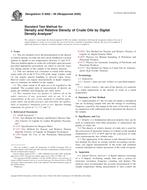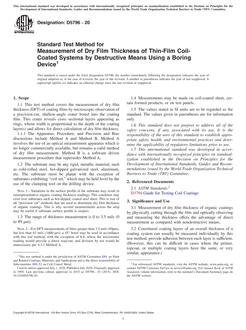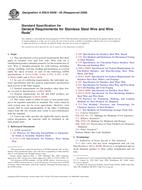1.1 This practice covers the use of gas chromatography and mass spectrometry to analyze and compare petroleum oil spills and suspected sources.
1.2 The probable source for a spill can be ascertained by the examination of certain unique compound classes that also demonstrate the most weathering stability. To a greater or lesser degree, certain chemical classes can be anticipated to chemically alter in proportion to the weathering exposure time and severity, and subsequent analytical changes can be predicted. This practice recommends various classes to be analyzed and also provides a guide to expected weathering-induced analytical changes.
1.3 This practice is applicable for moderately to severely degraded petroleum oils in the distillate range from diesel through Bunker C; it is also applicable for all crude oils with comparable distillation ranges. This practice may have limited applicability for some kerosenes, but it is not useful for gasolines.
1.4 The values stated in SI units are to be regarded as the standard.
This standard does not purport to address all of the safety concerns, if any, associated with its use. It is the responsibility of the user of this standard to establish appropriate safety and health practices and determine the applicability of regulatory limitations prior to use.
Product Details
- Published:
- 08/15/2006
- Number of Pages:
- 12
- File Size:
- 1 file , 220 KB
- Redline File Size:
- 2 files , 440 KB


